No Coasting for Me
New London, (Google Maps location)
May 2018
Assuming the long-delayed, much debated National Coast Guard Museum will open someday up the road in New London, I’ll go ahead and guess this smaller, obviously older museum will close. That’s a bit of a bummer, because I rather like this plucky little museum.
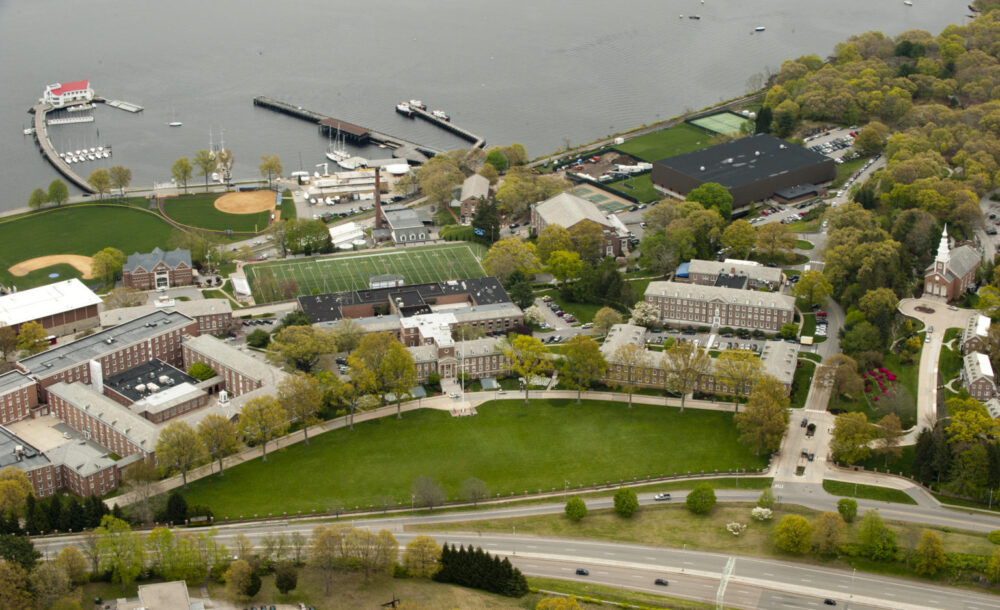
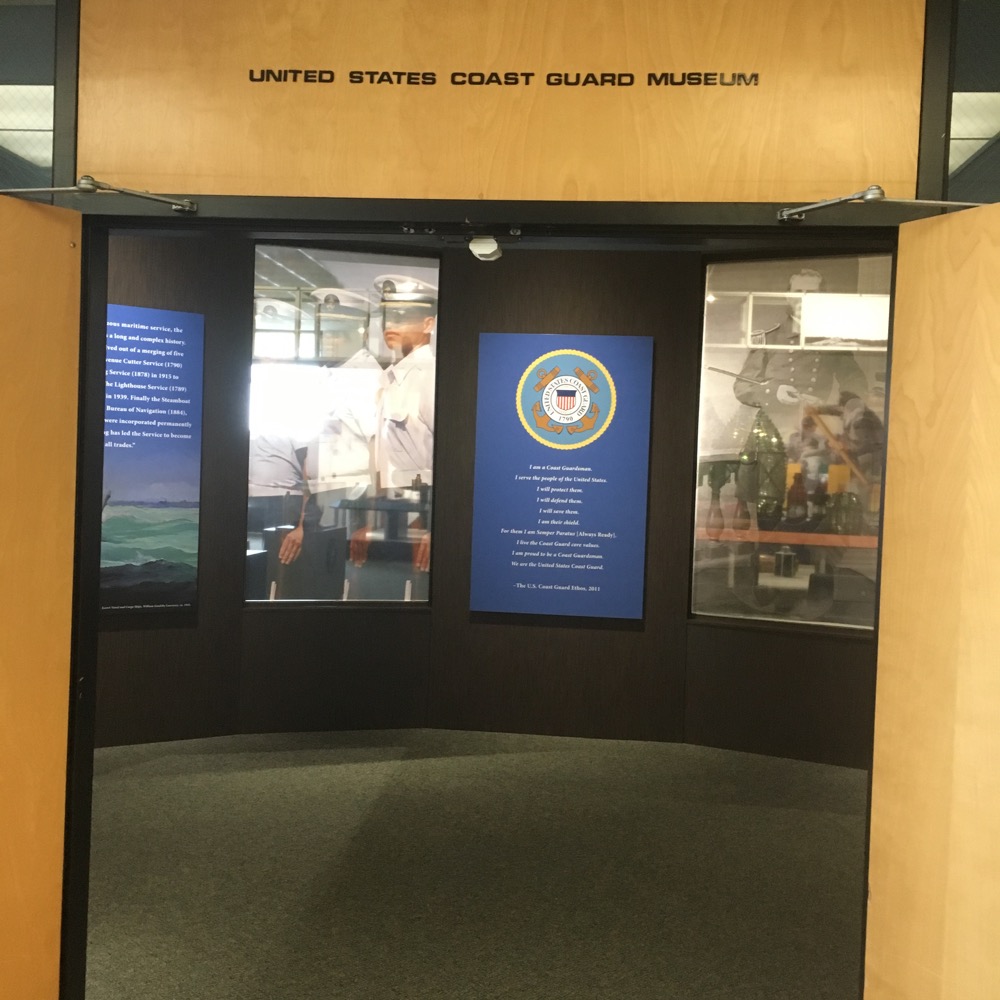
It is tucked away in Waesche Hall on the US Coast Guard Academy campus, so that right there is kind of cool. Much like vising the museums on the Naval sub base, you must show a driver’s license to get onto the campus here and if you’re not American, you apparently have to make an appointment. Just so you know.
You should also know that the Coast Guard is, indeed, one of the main branches of the US military, right there with the Army, Navy, Air Force, and Marines. Oh. And Space Force. Can’t forget about Space Force.
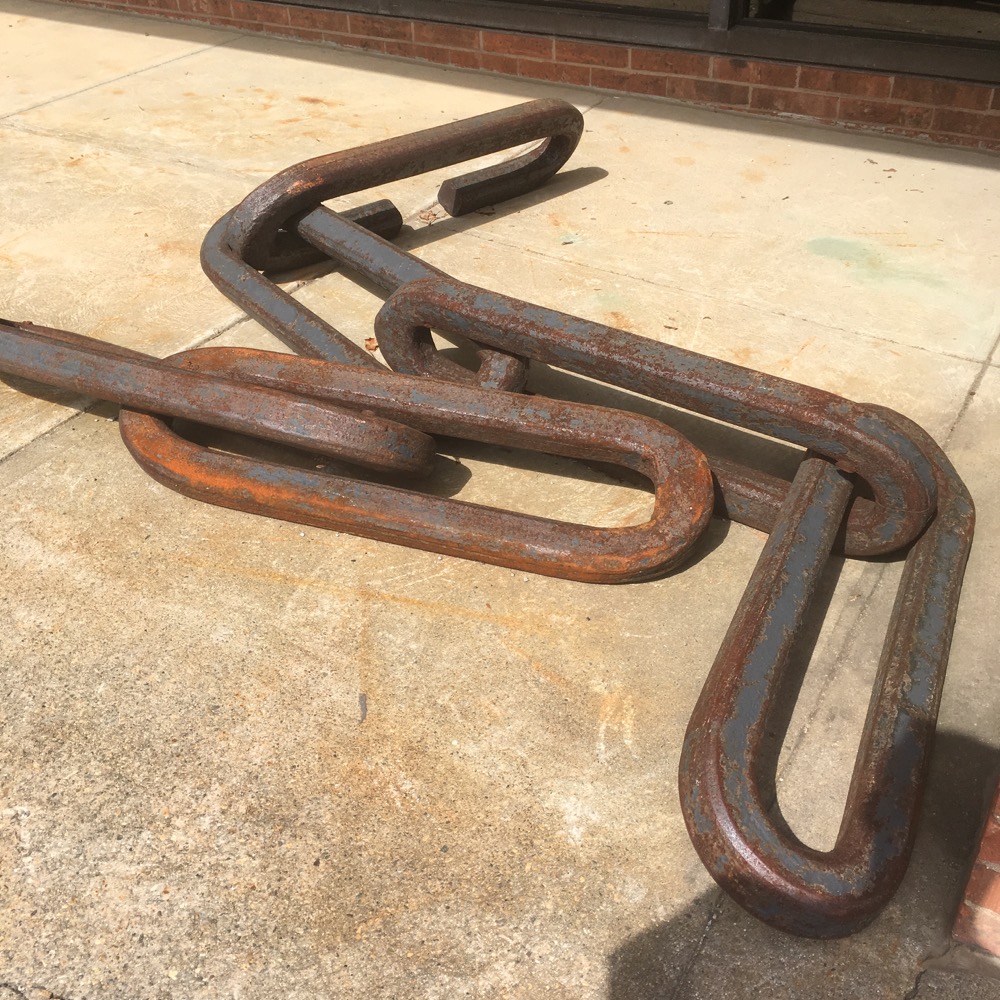
This is part of a chain that was stretched across the Hudson River at West Point in 1778 to block the British warships. That’s cool.
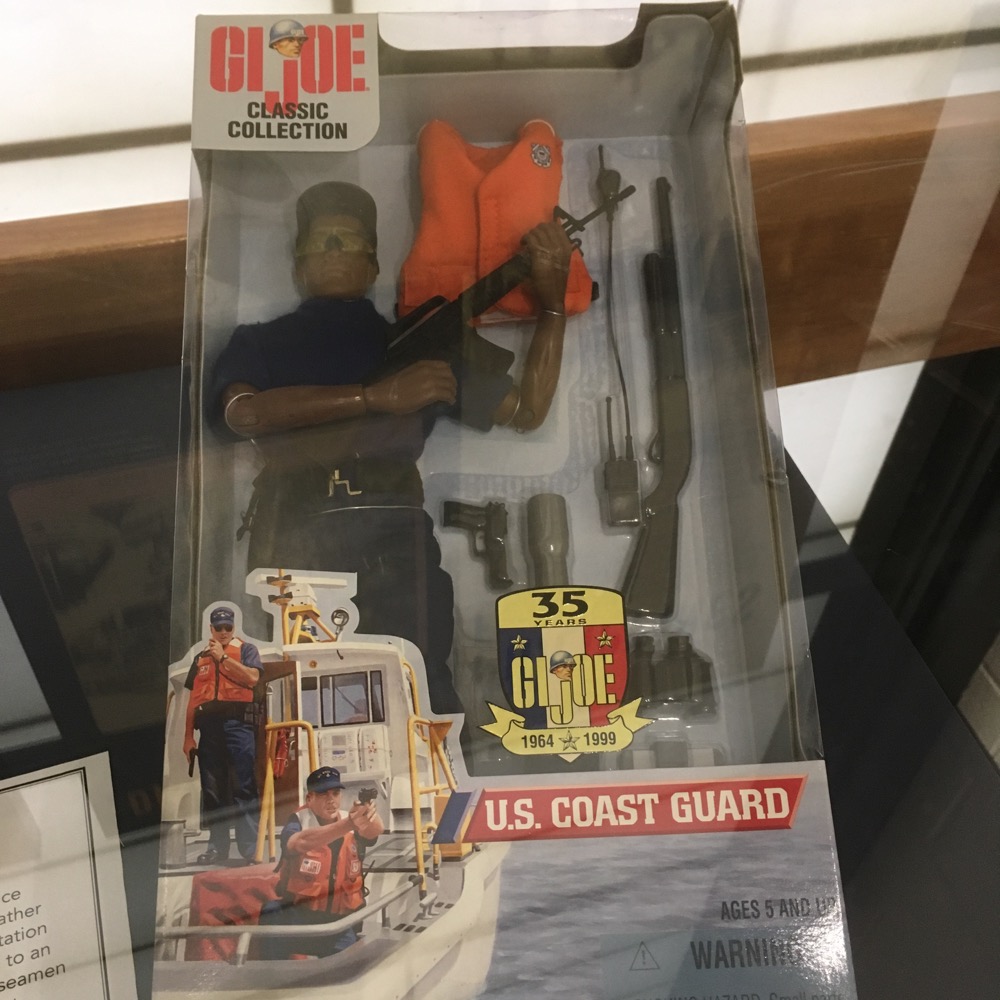
The U. S. Coast Guard’s rich heritage dates back to 1790, with the establishment of the Revenue Marine. As one of the first branches of the U.S. armed services, the Coast Guard has a lot of history, and much of it originated here in Connecticut.
I had read that the museum here is “small,” but it really isn’t. Someone like my dad, who is obsessed with military history, could spend at least two hours here. The collection goes all the way back to the beginning over two centuries ago with art and artifacts from the Revenue Cutter Service, the Life-Saving Service, the Lighthouse Service, the Bureau of Navigation and the Steamboat Inspection Service. The collection also includes artifacts from throughout the modern era including personal materials, uniforms, equipment, and tools.
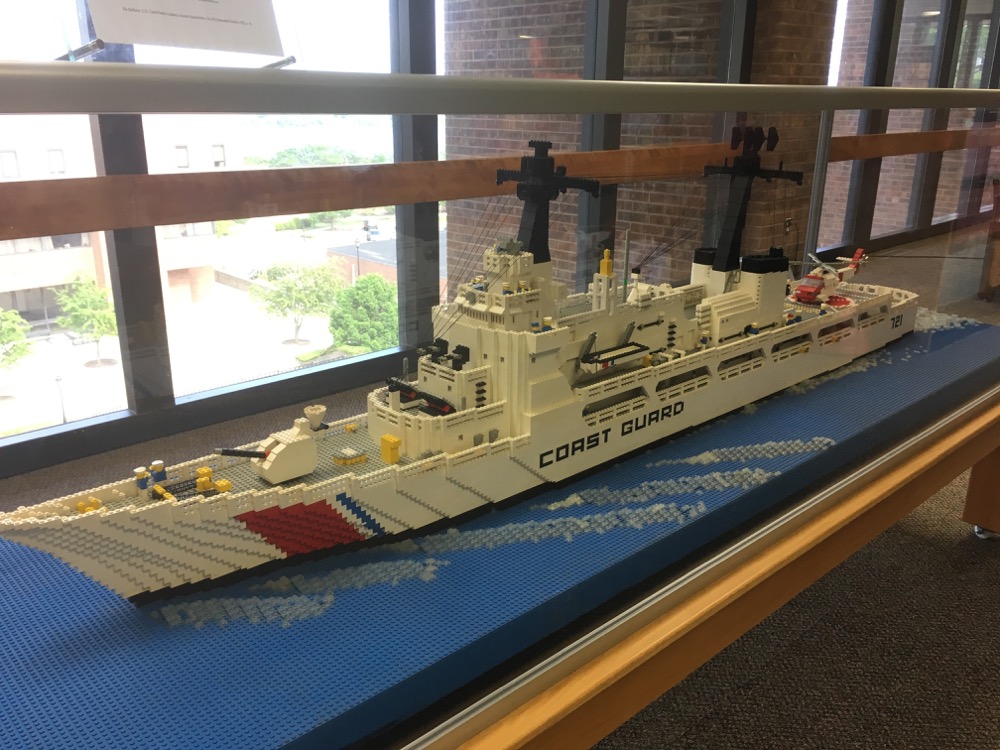
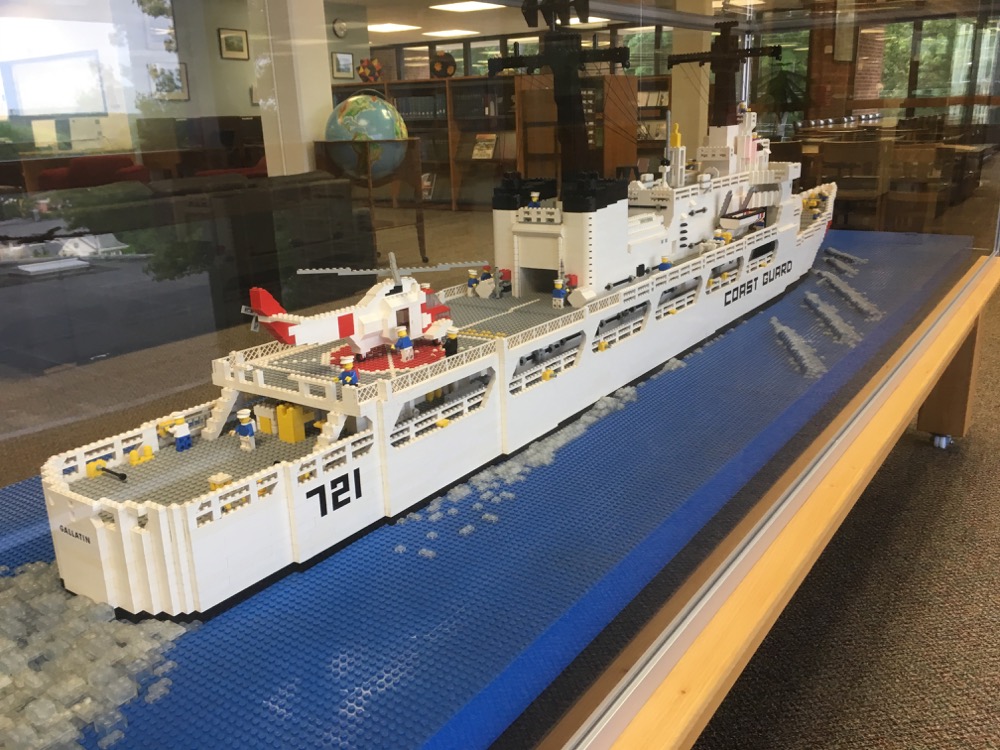
Giant LEGO models. (I was working for LEGO when I visited here and remember some coworkers, who like to keep track of giant models, being shocked at these. They were donated in the 1970’s.)
The museum is officially part of the Coast Guard Heritage Asset Collection, which doesn’t sound very interesting. Too military. And there is a lot here. I’m going to let them give an overview:
Featuring everything from models of a series of early steamships to the 270-foot cutter that plies the waters of today, the exquisite craftsmanship captures the changes in ship design over the last two hundred years. For figurehead buffs and wood carvers alike, the museum offers a small but choice collection of carvings. Of special value is the original figurehead from the Coast Guard’s training ship Eagle. One of the largest figureheads displayed in an American museum, it hangs as if mounted on the bow of a ship. Cannon, paintings, uniforms, and medals round out the displays.
And here it is, the Eagle’s figurehead:
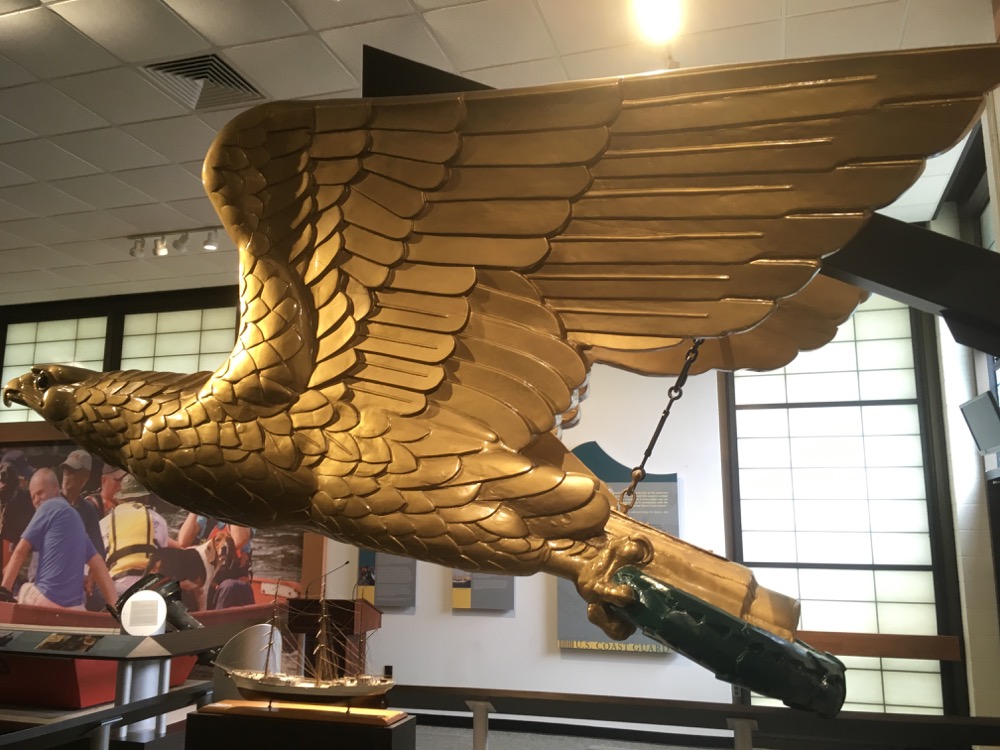
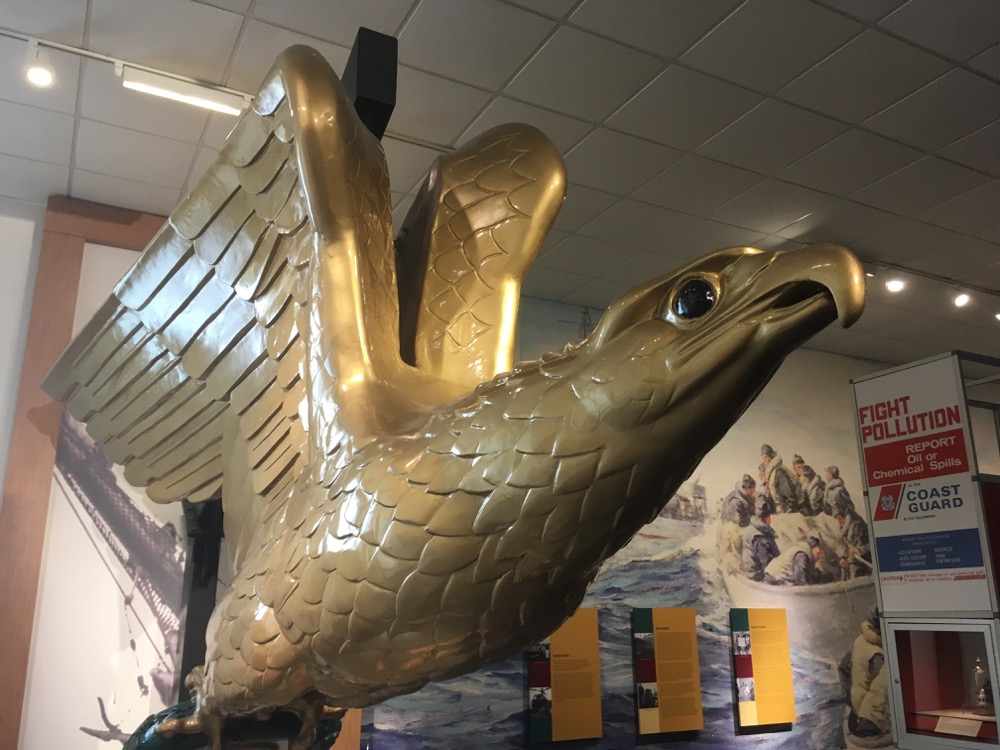
There’s a long, mildly interesting story of how the Coast Guard acquired The Eagle from Germany… The ship was originally named the Horst Wessel, and was constructed by Adolf Hitler to train German naval engineers. The United States seized EAGLE as a war reparation following World War II. EAGLE has served ever since as a sail training platform for cadets of the U.S. Coast Guard, and can be visited on campus by the likes of you and me every once in a while.
The roots of today’s Coast Guard were established in 1790 by Alexander Hamilton, one of America’s founding fathers and the first U.S. Secretary of the Treasury. Hamilton proposed the formation of the “Revenue Marine,” a seagoing military service that would enforce customs and navigation laws, collect tariffs, hail in-bound ships, make inspections and certify manifests. Previous to the War for Independence, proto-American sailors were basically pirates; smuggling in good through British blockades and doing all sorts of “illegal” things in the name of the war effort.
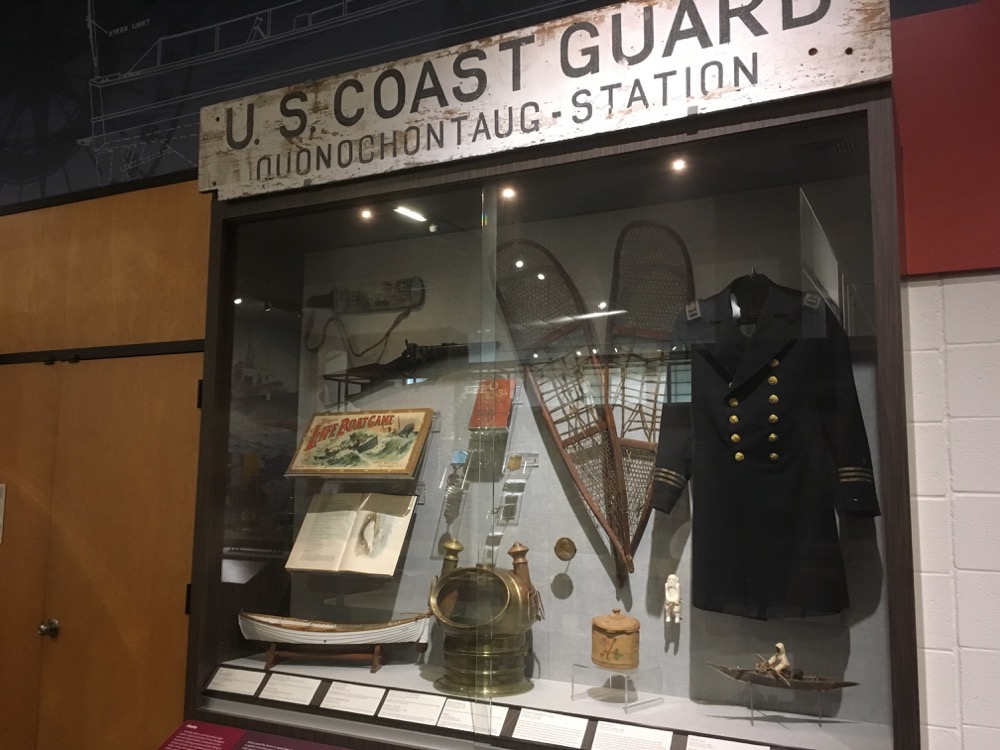
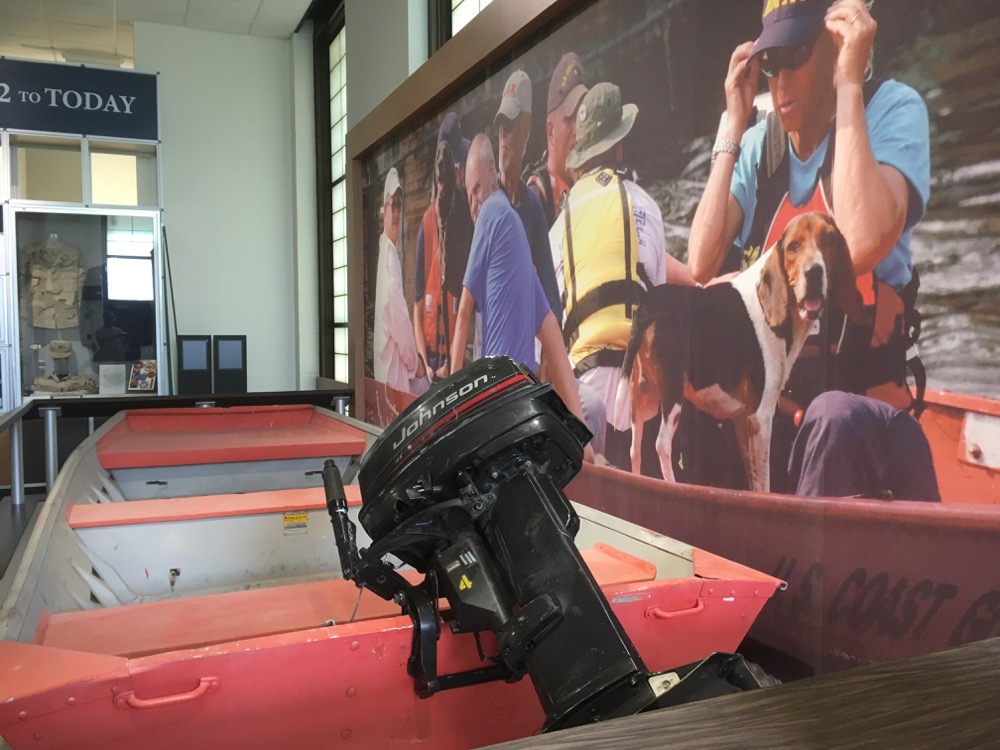
Punt used during Hurricane Katrina
After the war, Hamilton realized that smuggling was now a bad thing, so he set up these guards, so to speak, to collect money for the fledgling nation – which badly needed income. So yes, the Coast Guard began essentially as tax collectors to help the new nation out of its enormous war debt.
The service didn’t even have a name, but their boats were called Cutters. It took nearly 100 years for the service to become official; known in 1876 as the Revenue Cutter School of Instruction. Which is a hilariously bad name… they collected revenue in cutters, so they increased revenue rather than cutting it.
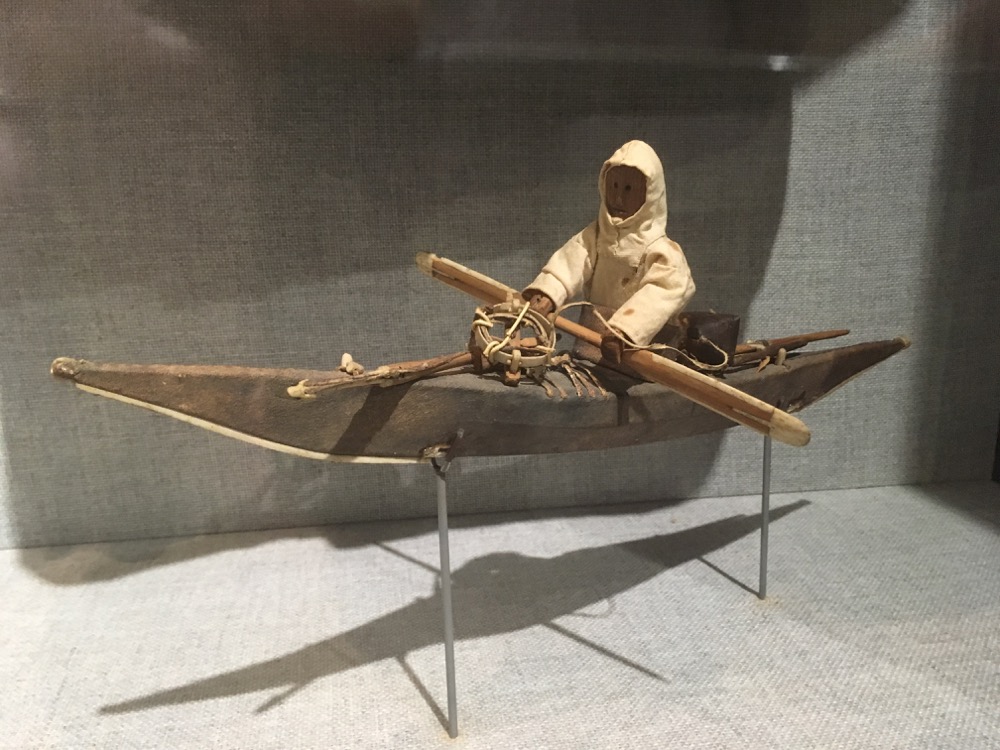
This little guy is from Greenland, bought on an early polar expedition
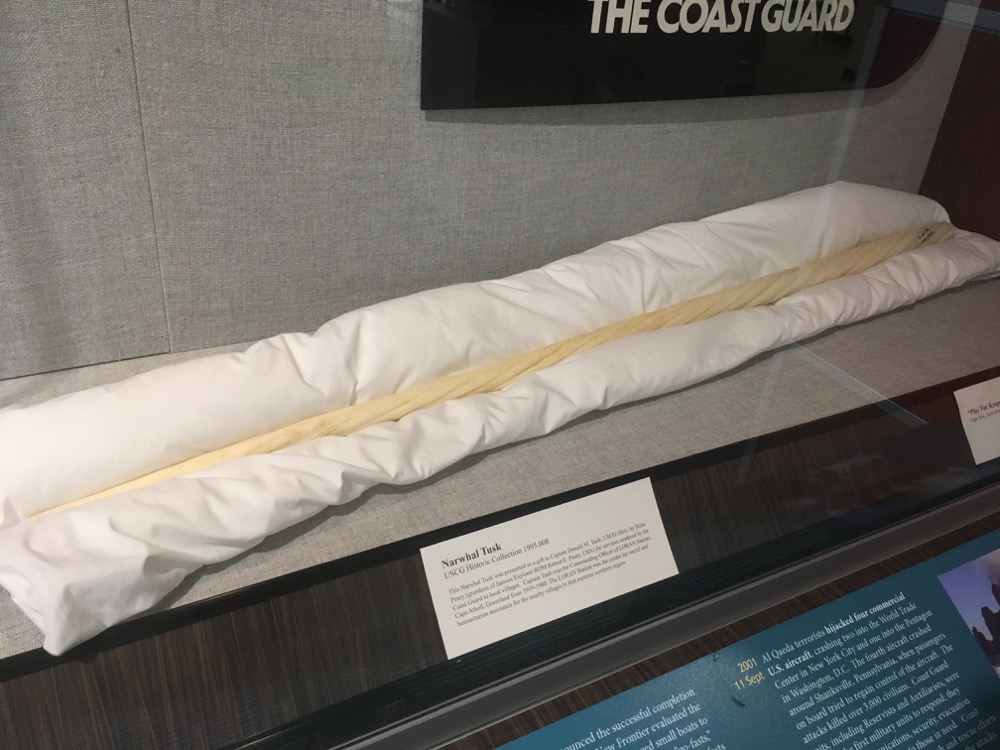
Narwhal tusk
The pre-Coast Guard Coast Guard was in New Bedford, Massachusetts… then in Curtis Bay, Maryland… then at Fort Trumbull in New London until 1932. By then it was called The US Coast Guard Academy at least.
The first black guy graduated in 1966. The first women weren’t enrolled until 1976.
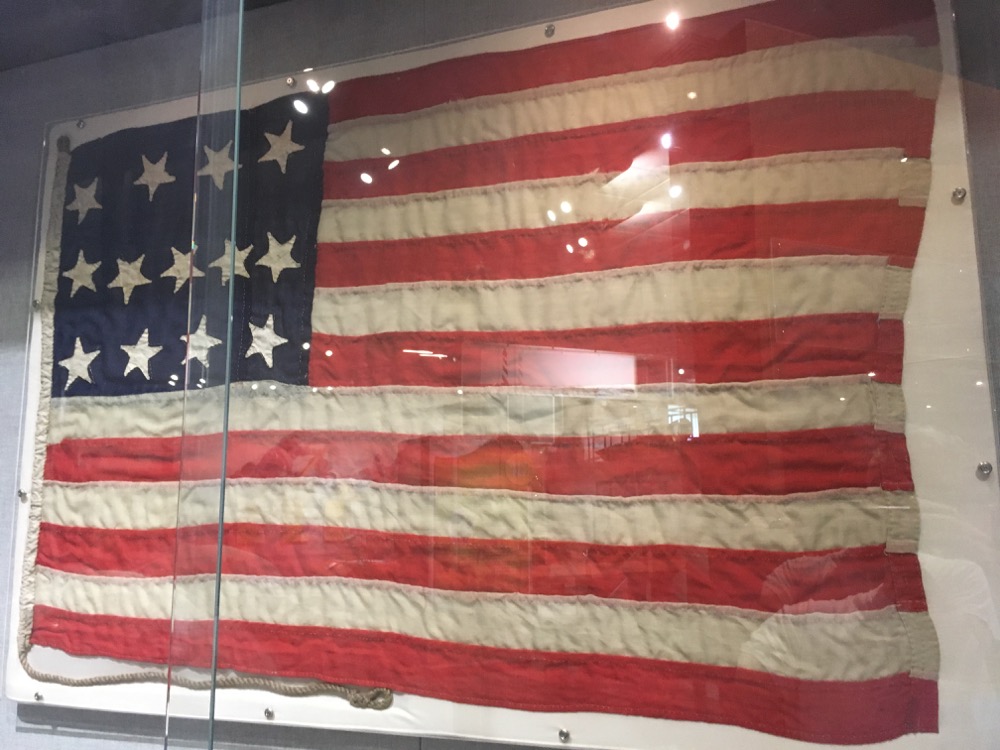
This flag was donated by the family of Hopley Yeaton, the first Revenue Cutter officer in 1791
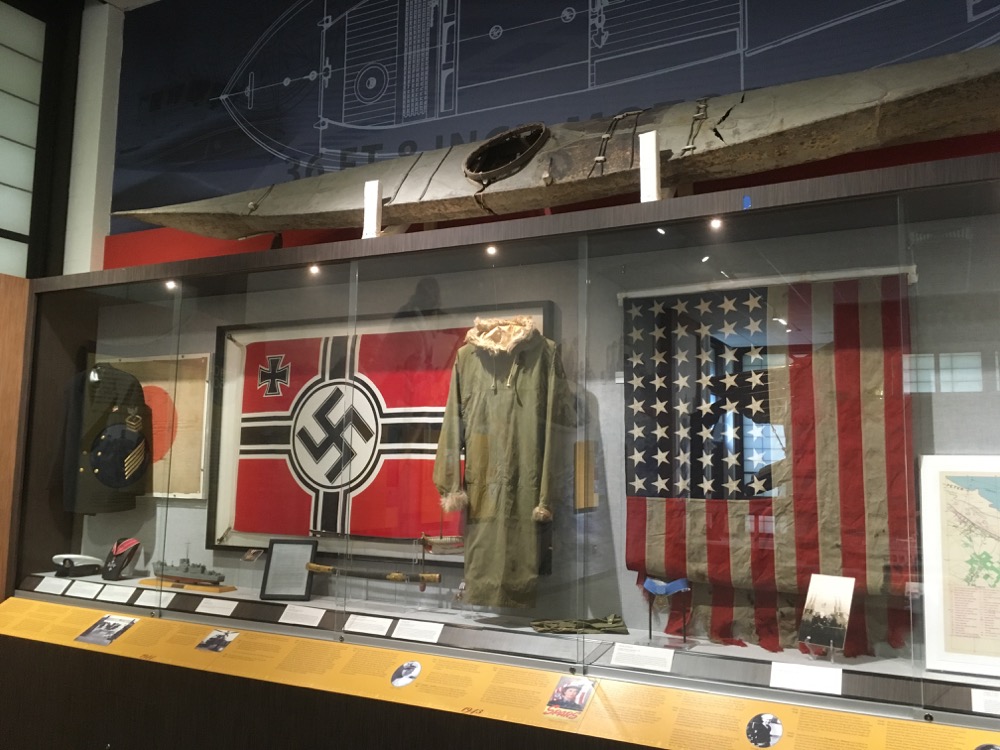
This flag was captured in France
The Coast Guard’s Heritage Asset Collection of over 20,000 artifacts, models and works of art is managed and maintained by the Curatorial Services Program. And this is just a taste! The bulk of the collection is stored at the Exhibit Center, a facility in Forestville, Maryland. The Curatorial Services Program manages a robust loan program with more than 1,700 Coast Guard artifacts on loan to over 275 non-profit organizations throughout the United States. The Curatorial Services Program also manages this museum, which serves as the main exhibition space for the Heritage Asset Collection.
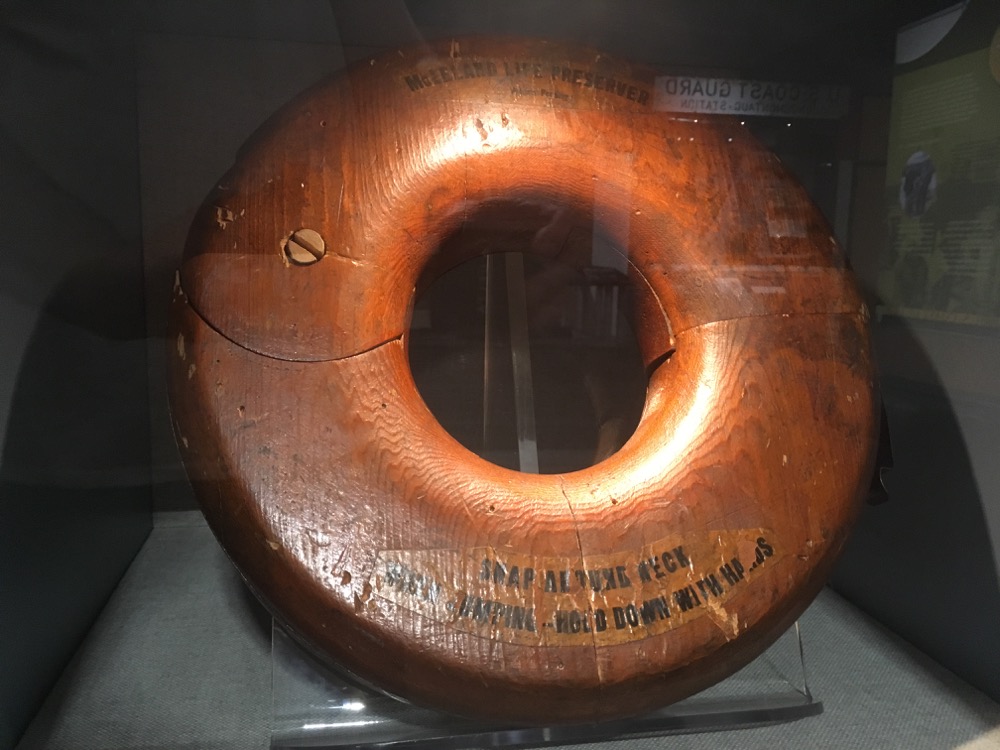
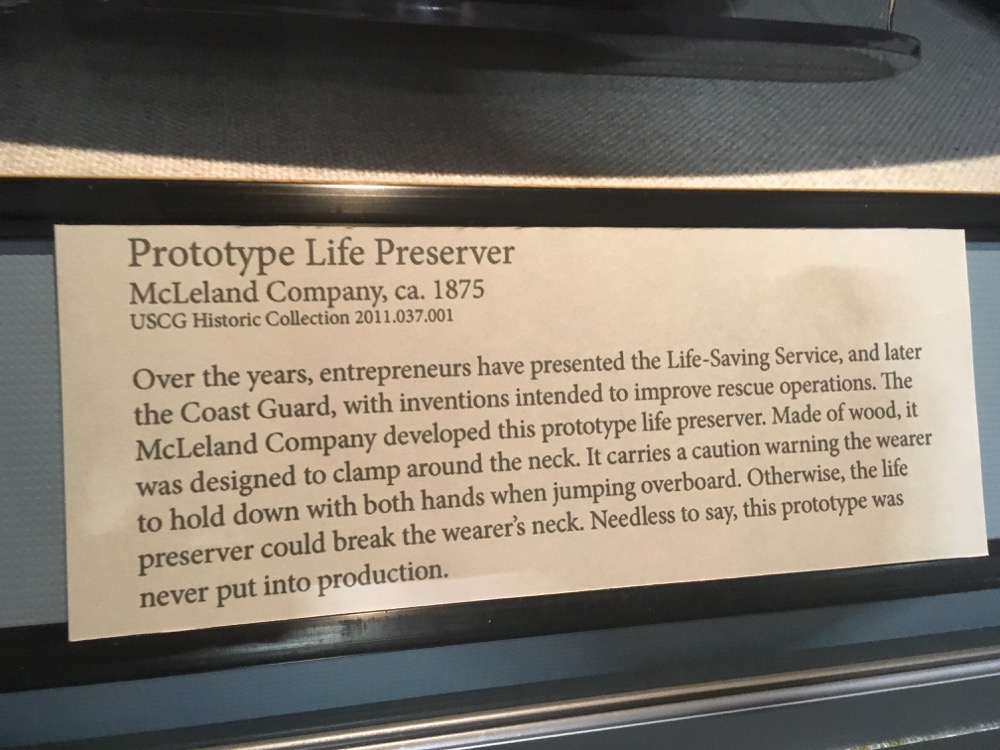
Awesome
There’s a little bear cage here; well, it’s a cage that they tell me was a bear cage. Back in 1933 some cadet showed up with a bear cub and apparently that was okay, so he kept the bear as a pet. This bear became the Coast Guard mascot, and he was named Objee, short for “objectionable presence” which is apparently a Coast Guard thing?
This tradition of live baby bears continued through TWENTY-SEVEN live baby bear mascots! My word. Objee is still the name and the mascot is still a bear, but, you know, now it’s a guy in a costume.
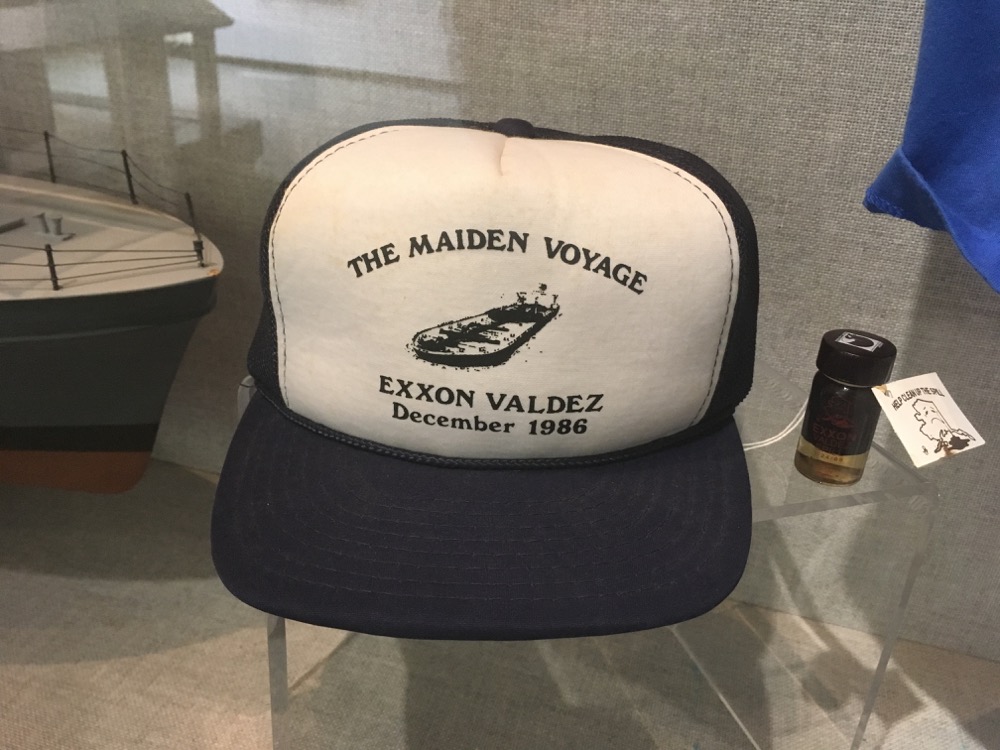
Oof
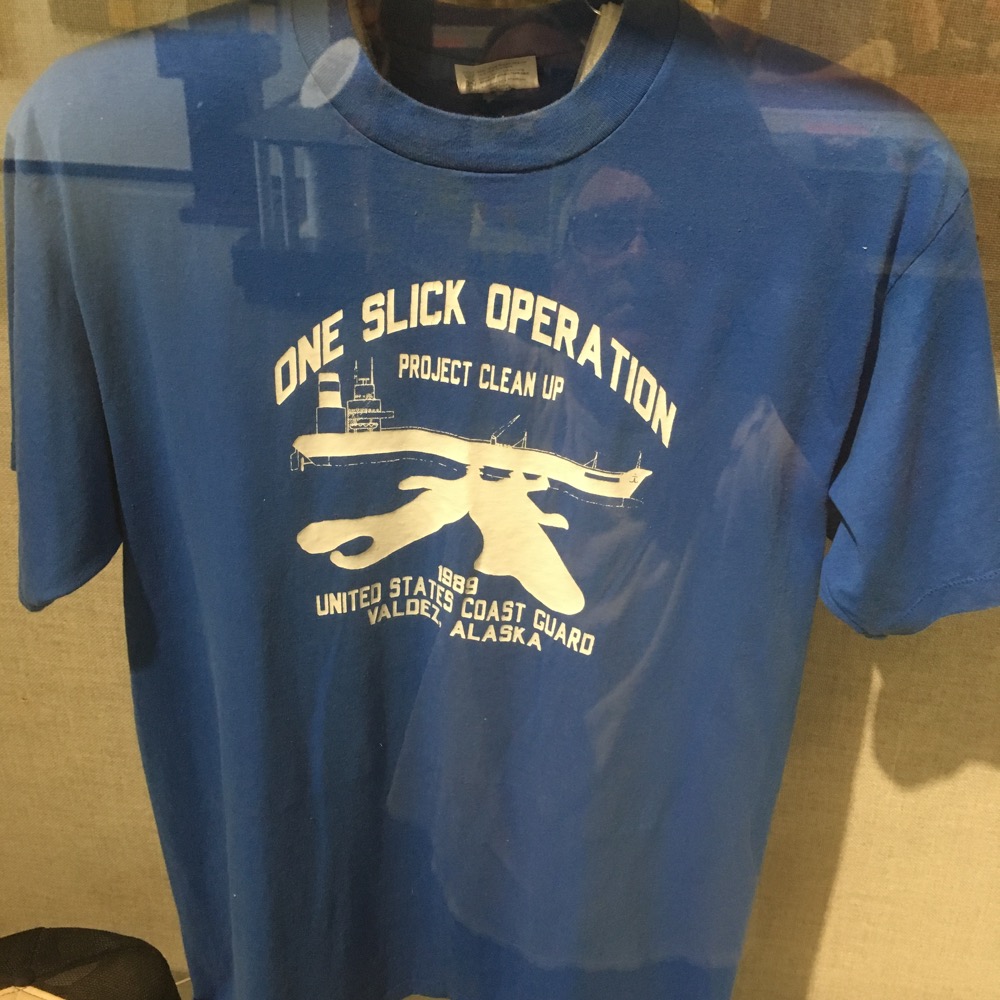
Environmental disaster puns are hiLARious
I haven’t really followed the new Coast Guard museum drama. I know it has filled The Day’s op-ed page at least once a month, every month, for years. It does look like it will move forward, and it will be a large, shiny, fancy museum worthy of the Coast Guard. It will probably have too many “interactive kiosks” that won’t work in two years and will have too few history lessons and weirdo random artifacts and objects.
That’s the charm of this on-campus museum. While it has flow and order, it also has random bear traps and Valdez memorabilia. Don’t lose site of that, fancy new place… that stuff is fun and charming and quirky. Do it for me? Thanks.
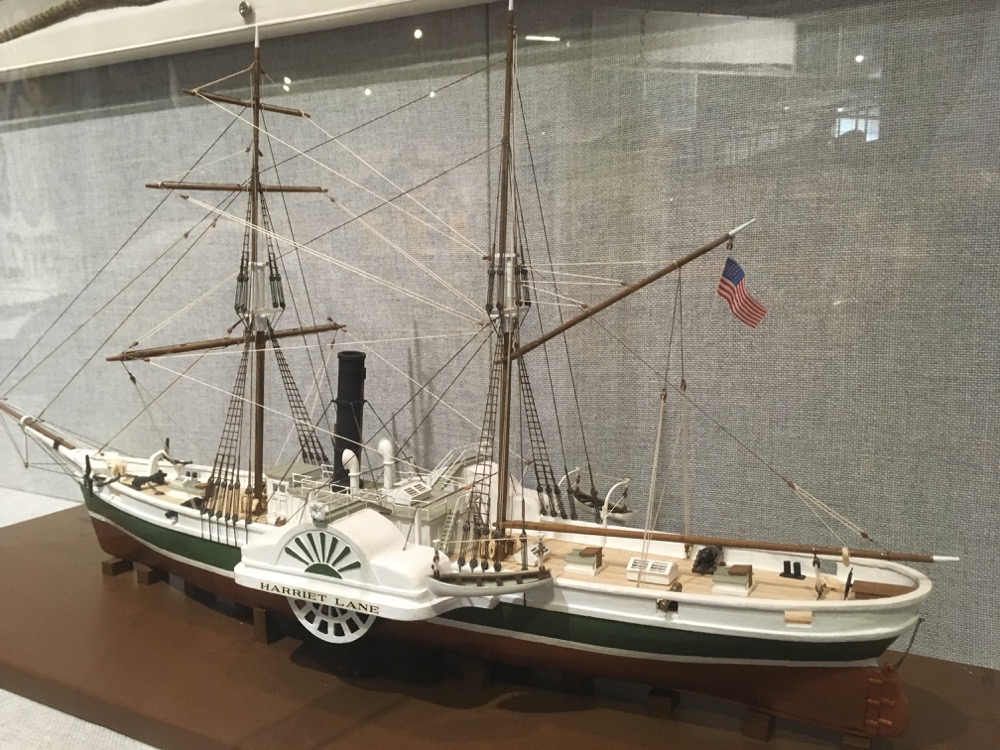
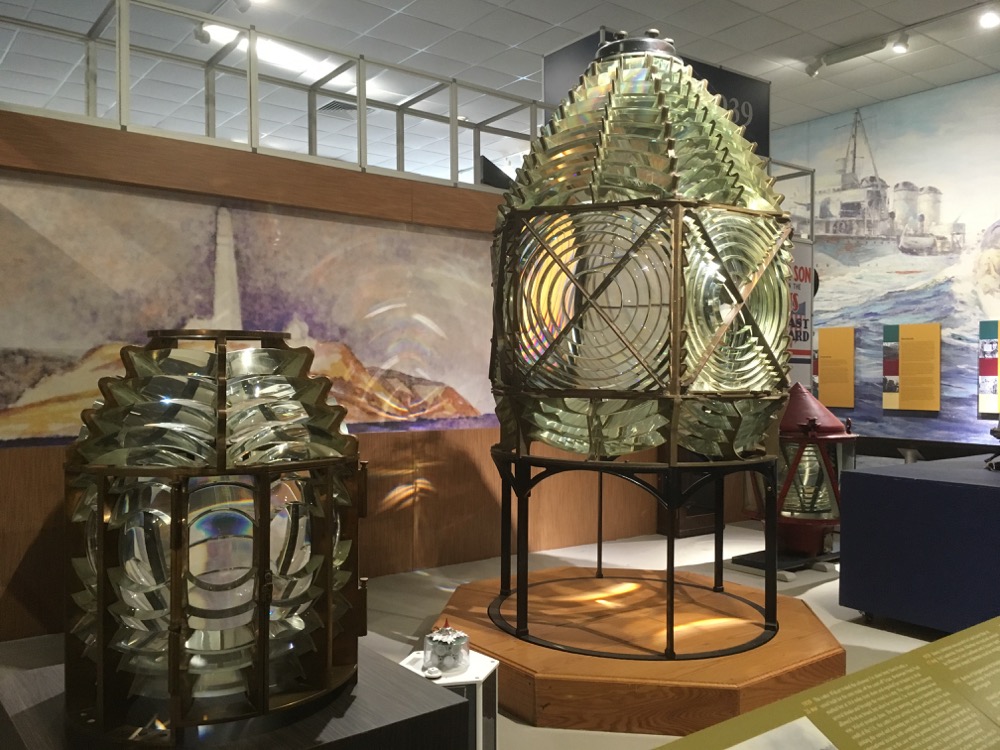
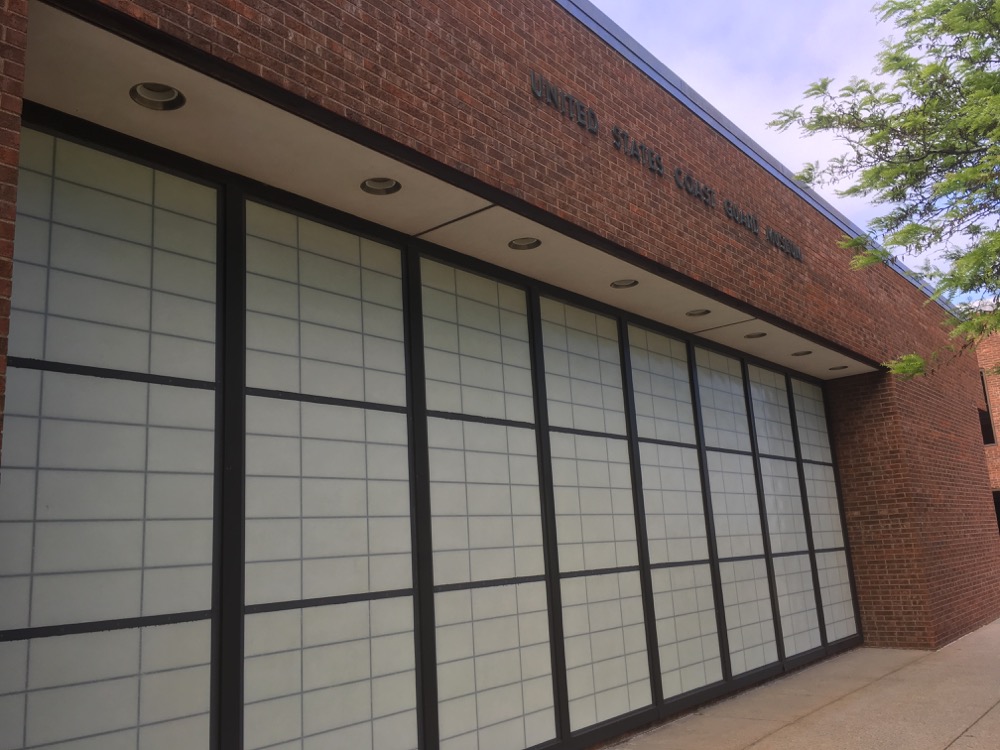
![]()
US Coast Guard Museum
CTMQ’s Museum Visits

 Charles Deppe says
Charles Deppe says
April 15, 2025 at 8:13 pmVery interested
 Charles Deppe says
Charles Deppe says
April 15, 2025 at 8:17 pmThank you. Is there an entrance free?